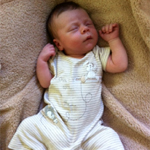Is your Achilles heel your Achilles heel?
With the onset of spring, the days get longer and brighter and the runner’s thoughts inevitably turn to the race season. When planning a training schedule, it’s also a very good idea to think about how you can avoid injury, especially in the Achilles tendon. This unpleasant and often painful complaint afflicts up to two thirds of athletes, especially those in middle age.
The Achilles explained
The Achilles tendon (or heel cord) runs down the back of the calf, connecting it with the heel bone. Comprising bundles of fibres (collagen), it’s attached to, and worked by, two large calf muscles. Who knew that it’s also the human body’s thickest tendon? When it pulls on the heel the Achilles causes us to raise up on tiptoe and it also pushes us forwards when walking or running.
Problems, problems, problems…
Unfortunately, as we age the tendon becomes less flexible or able to withstand the repeated stress of running. Eventually, small tears develop in the fibres and, while the body’s own repair system often sorts these out, weak blood supply to the lower part of the tendon and the continued stresses of training can delay healing. The tendon can become stiff, painful, hot, swollen and/or weak – a condition called tendonosis (or tendonitis), while inflammation of the tendon lining (tenosynovium) specifically is known as tenosynovitis. Sometimes the tendon becomes so weakened that it tears completely, causing a sudden severe pain in your heel or calf, followed by pain, swelling, bruising, and difficulty in walking.
Apart from wear and tear, Achilles tendonosis can be caused or exacerbated by:
- Overuse – such too much repetitive uphill running and/or repeated sharp movements such as jumping or throwing
- Poor ankle/foot biomechanics – for example, the arches of your feet are too high or low
- Weakness/tightness of the calf muscles
- Wearing very flat shoes such as flip flips – these provide little support and do not stretch out the Achilles tendon regularly or sufficiently
Tips for managing Achilles tendon injuries
If you suspect a complete tear, you must seek medical help immediately. However, most Achilles tendon injuries respond well to the following treatments:
- Applying an ice pack to the affected area for 10-15 minutes to ease pain and swelling
- If you know they agree with you, taking painkillers such as paracetamol or anti-inflammatory medicines
- Resting completely, or at least reducing your training (especially repetitive types of exercise) until symptoms subside, and not over-exercising tired muscles
- Warming up and cooling down properly, remembering to stretch out the Achilles tendon
- Swapping road running for grass or another softer running surface, and use well-padded running shoes
- Avoiding flat shoes – shoes with a small heel are best for everyday use
What can I do to help with your Achilles pain?
- Depending on the diagnosis (and your age and fitness) I can use a variety of electrotherapy, gentle massage and manipulative techniques or acupuncture to reduce pain and inflammation
- I may also examine muscles and joints in the lower limb, the knee, hip and lower back to check for muscle tightness and joint restrictions. Improving mobility in these joints can help the foot and ankle function better
- I may offer advice on footwear and lifestyle factors that might be preventing healing
- I may refer you for X-rays, scans or other tests may be required to make a diagnosis
So, please get in touch if you have any calf, heel or ankle pain and I’ll take a look, discuss treatment options with you and help you via osteopathy or acupuncture.





















